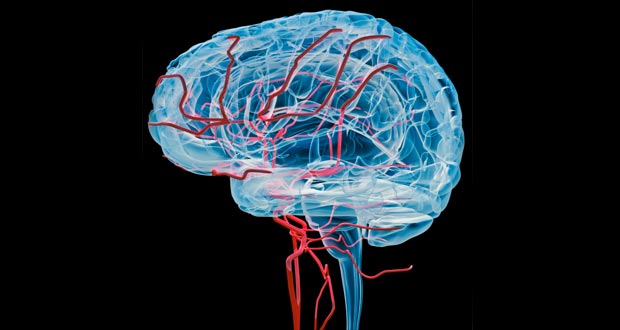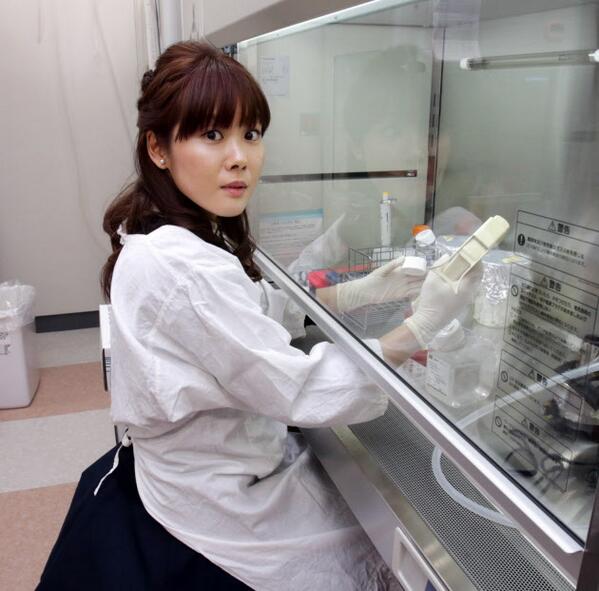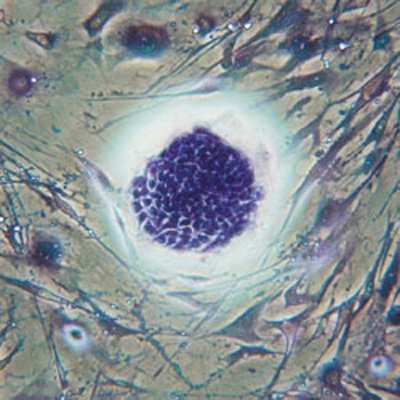According to a pilot study by Imperial College London, infusing stem cells into the brain may help boost recovery after a stroke.
Scientists believe the cells encourage new blood vessels to grow in damaged areas of the brain.
They found most patients were able to walk and look after themselves independently by the end of the trial, despite having suffered severe strokes.
Larger studies are needed to evaluate whether this could be used more widely.
In this early trial – designed primarily to look at the safety of this approach – researchers harvested stem cells from the bone marrow of five people who had recently had a stroke.

Infusing stem cells into the brain may help boost recovery after a stroke
They isolated particular types of stem cells – known as CD34+. These have the ability to stimulate the growth of new blood vessels.
They were infused directly into damaged sections of the brain, via the major artery that supplies this area.
Scientists monitored the patients for six months, charting their ability to carry out everyday activities independently.
Four of the five patients had suffered particularly severe strokes – resulting in the loss of speech and marked paralysis down one side of the body.
This type of stroke usually has a high fatality and disability rate.
However, researchers found three of the four patients were able to walk and look after themselves independently at the end of the six-month period.
With some help, all five were mobile and could take part in everyday tasks.
Though other stem cell treatment has shown promise as stroke therapy before.
Scientists hope getting to patients early will improve chances of success.
The study is published in Stem Cell Translational Medicine.
An investigation into a supposedly groundbreaking stem cell study in Japan has found lead researcher Dr. Haruko Obokata guilty of misconduct.
The Riken Centre panel said Dr. Haruko Obokata fabricated her work in an intentionally misleading fashion.
It said there were irregularities in data and images used in Dr. Haruko Obokata’s scientific papers published in Nature.
She stands by her claim to be able to produce stem cells using an acid bath or mechanical stress.
There were high hopes about the technique that promised to offer a cheap and ethical source of stem cells.

The Riken Centre panel said Dr. Haruko Obokata fabricated her work in an intentionally misleading fashion
Stem cells can become any other type of tissue and are already being investigated to heal the damage caused by a heart attack and to restore sight to the blind.
But experts have been questioning Dr. Haruko Obokata’s findings and other research groups have failed to reproduce her results.
One of Dr. Haruko Obokata’s articles reused images related to her doctoral dissertation, which was based on different experiments.
“Actions like this completely destroy data credibility,” Shunsuke Ishii, head of the Riken committee, told a news conference.
“There is no doubt that she was fully aware of this danger. We’ve therefore concluded this was an act of research misconduct involving fabrication.”
In a statement, Dr. Haruko Obokata said she would soon file a complaint with Riken, challenging the panel’s findings.
“I’m filled with shock and indignation,” she said.
“If things stay as they are, misunderstanding could arise that the discovery of stap [stem] cells itself is forgery. That would be utterly unacceptable.”
[youtube I1k04TNSJDY 650]
A new stem cell technique for growing working liver cells which could eventually avoid the need for liver transplant has been developed by British scientists from Sanger Institute and Cambridge University.
The British researchers used cutting-edge methods to correct a genetic mutation in stem cells derived from a patient’s skin biopsy, and then grew them into fresh liver cells. The scientists team put the new liver cells into and found they were fully functioning.
Dr. Allan Bradley, director of the Sanger Institute said:
“We have developed new systems to target genes and … correct … defects in patient cells.”
According to Dr. Allan Bradley, the Sanger Institute technique leaves behind no trace of the genetic manipulation, except for the gene correction.
“These are early steps, but if this technology can be taken into treatment, it will offer great possible benefits for patients,” Dr. Bradley added.

The British researchers from Sanger Institute used cutting-edge methods to correct a genetic mutation in stem cells derived from a patient's skin biopsy, and then grew them into fresh liver cells
Stem cells are the body’s master cells, the source for all other cells, and specialists say they could transform medicine, providing treatments for blindness, spinal cord and other severe injuries, and new cells for damaged organs.
The Sanger Institute research is focused on two main forms:
1. embryonic stem cells, which are harvested from embryos,
2. reprogrammed cells, also known as induced pluripotent stem cells (iPS cells), which are reprogrammed from ordinary skin or blood cells.
iPS cells were first discovered in 2006. The iPS cells seemed to be the perfect solution for the ethical debate over the use of embryonic stem cells, because they are made in a laboratory from ordinary skin or blood cells.
Embryonic stem cells are usually harvested from leftover embryos at fertility clinics and their use is opposed by many religious groups.
In recent years, some concerns have been raised that iPS cells may not be as “clean” or as capable as embryonic cells.
In 2010, a group led by Robert Lanza, of the U.S. firm Advanced Cell Technology, compared batches of iPS cells with embryonic stem cells and noticed the iPS cells died more quickly and were much less able to grow and expand.
The British study has been published in the journal Nature.
The research team took skin cells from a patient with a mutation in a gene called alpha1-antitrypsin, which is responsible for making a protein that protects against inflammation.
Patient with mutant alpha1-antitrypsin are not able to release the protein properly from the liver, so it becomes trapped there and eventually leads to liver cirrhosis and lung emphysema.
This is one of the most common inherited liver and lung disorders and affects about one in 2,000 people of North European origin, the researchers said.
The scientists reprogrammed the skin cells back into stem cells before inserting a correct version of the gene using a DNA transporter called piggyBac.
The leftover piggyBac sequences were then removed from the cells, cleaning them up and allowing them to be converted into liver cells without any trace of residual DNA damage at the site of the genetic correction.
Professor David Lomas, from Cambridge University respiratory biology department said: “We then turned those cells into human liver cells and put them in a mouse and showed that they were viable.”
Dr. Ludovic Vallier, also from Cambridge University, said the results were a first step toward personalized cell therapy for genetic liver disorders.
“We still have major challenges to overcome…but we now have the tools necessary.”
The British researchers said it could be another 5 to 10 years before full clinical trials of the technique could be run using patients with liver disease.
If the new technique will succeed, liver transplants, which is a costly and complicated procedure, where patients need a lifetime of drugs to ensure the new organ is not rejected, could become a thing of the past.
Professor David Lomas said: “If we can use a patient’s own skins cells to produce liver cells that we can put back into the patient, we may prevent the future need for transplantation.”



